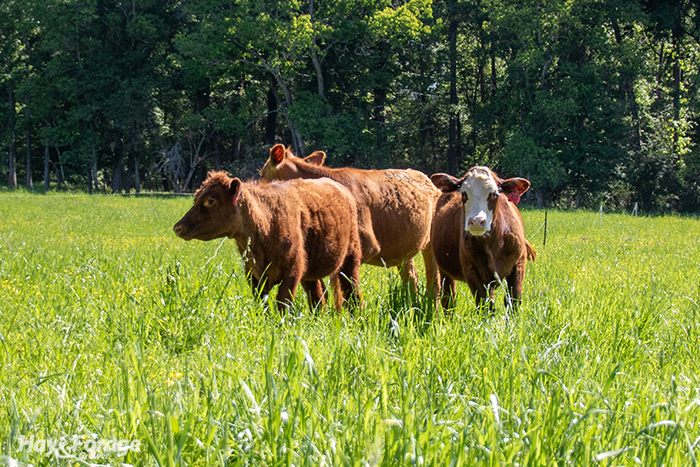
We know about toxins in Kentucky 31 tall fescue. We also know that mycotoxins can be an issue in corn silage. Now, University of Florida researchers are finding that some warm-season pastures and hayfields may also be infected with mycotoxins and impacting cattle performance.
The researchers and county extension agents have conducted two surveys to determine the prevalence, seasonal patterns, geographic distribution, and grass species associations of mycotoxins across Florida. They found that various mycotoxins are present in species such as bahiagrass, bermudagrass, limpograss, and smutgrass weeds.
The most prevalent toxins in the survey included fumonisin B1, zearalenone, dihydrolysergol, and emodin. In some cases — particularly those containing fumonisin B1 or zearalenone — the accepted safety thresholds were exceeded. This raises some concern about potential livestock health impacts.
Mycotoxins are secondary metabolites produced by fungi that may cause harm to animals and people who ingest them, but they are not typically harmful to the host plant. They are released by endophytic (inside the plant) and epiphytic (on outside surfaces) fungi that are commonly associated with forage grasses and grass-type weeds.
The Florida investigators note that there are dozens of different mycotoxins being discovered, but research into mycotoxin types, fungal sources, impacts on livestock health, and mitigation is still in its early stages. The researchers note that warm and humid conditions favor fungal proliferation in forage grasses. Consequently, pastures and hayfields in the southeast U.S. are most susceptible to problematic mycotoxin concentrations.
Seasonal variation
The initial survey findings indicated that grass fungi prevalence in Florida tends to be enhanced during late spring and early summer, as rising temperatures and humidity create more favorable growing conditions. Similarly, in late summer, fungi may be subject to fluctuating moisture and heat, which can also stimulate mycotoxin production. According to the researchers, accumulated mycotoxins in forages can persist in the dry and cooler seasons of fall through early spring, even though pastures may appear healthy.
These initial findings highlight the need for continued research on how climate variability and pasture management influence the synthesis and persistence of mycotoxins. Regular monitoring and improved diagnostic tools are critical to mitigate risks and support livestock health management in Southern forage-based systems.
Test to confirm
If cattle that are grazing or consuming hay develop health issues associated with mycotoxin exposure, producers are encouraged to consult their veterinarian. Some commercial laboratories have the resources to test forage samples for mycotoxins. These labs can usually identify and quantify many well-known toxins within five to 10 business days.
When submitting samples, University of Florida experts offer the following advice:
• Contact the commercial lab before collection to confirm sample size, packaging instructions, and chain-of-custody forms.
• Clearly specify which mycotoxins that you want to test for. If the budget is limited, producers can focus on testing for the toxins most found in pastures such as zearalenone, fumonisins, alternariol, and ochratoxin.
• For fresh, green samples, drying or freezing may be required to preserve sample integrity prior to shipping. This is not necessary for dry hay samples.

